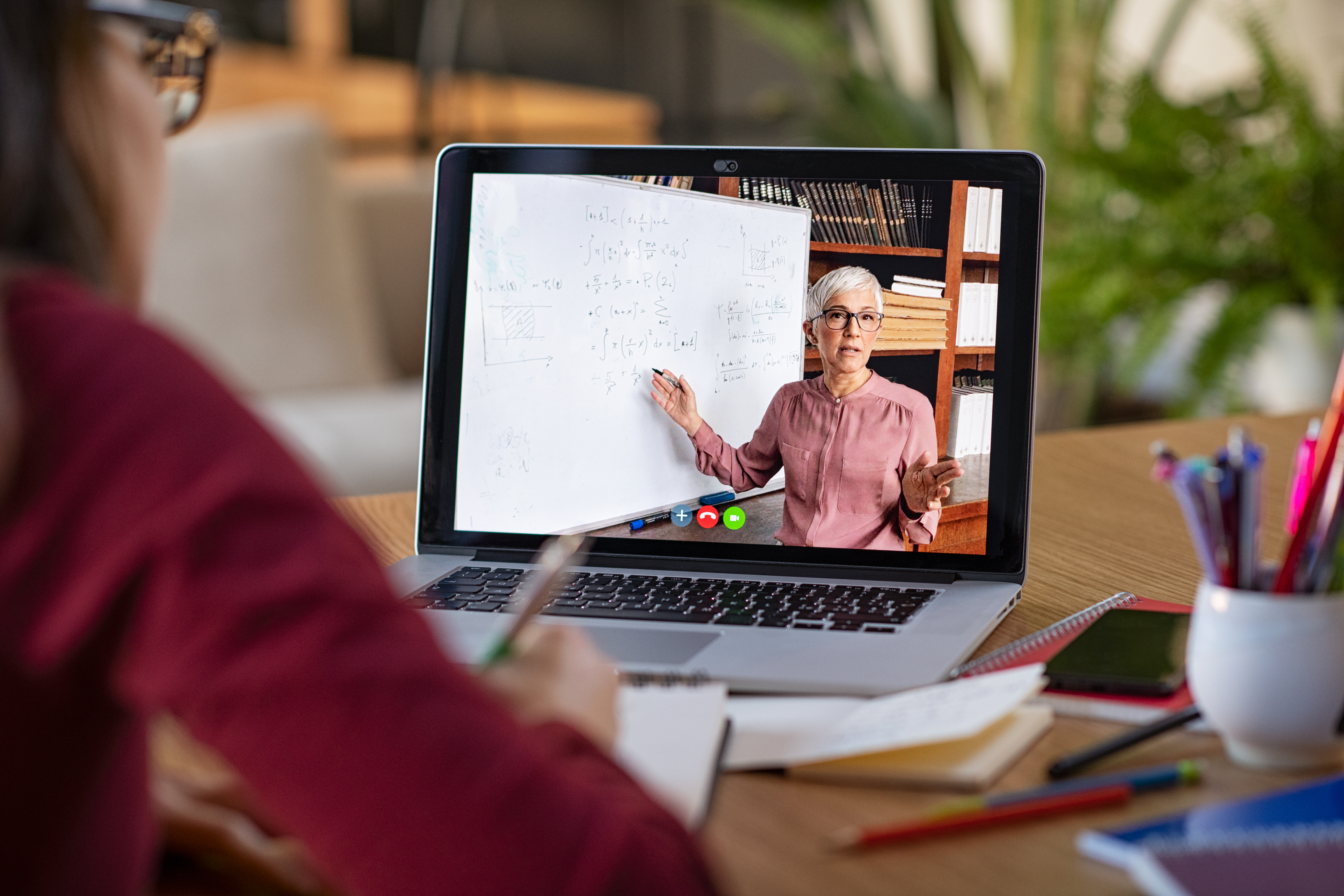Online Learning: Is Your School Ready to Engage?

There are many pedagogical and other considerations, in addition to the IT requirements and dealing with the risks associated with a fully online curriculum delivery that schools need to be aware of in order to transition their school community from what was until recently the ‘norm’ to what is rapidly becoming the ‘new normal’.
What Should Schools Do to Prepare for Online Learning?
The keys to a successful transition to distance learning in the home are for there to be clear information for students and parents about what to expect, how to navigate the online learning space, and where they can go to get help and also an opportunity for a good relationship to begin between the teachers and the student. Learning happens best when students are well-known and know that they are known. That is the essence of a good teacher-student relationship and it is what gives students confidence to ask questions, make contributions, stay interested and work hard.
—Malcolm Bromhead, Principal Australian Christian College Southlands (Albany) WA (The West Australian 28/3/20)
A key point to take away from this quote is that, as it is now late March, most teachers will have started to develop a rapport and relationship with their students during the brief period of face-to-face teaching and learning that occurred at the beginning of the academic year. This will hopefully make the ongoing transition to an online classroom environment a little less difficult as some trust and confidence in the teachers is beginning to develop. In addition, the teachers will have started to get to know their students. They will know who needs to have a little extra assistance, or who needs to have a little more supervision (these are often the first they get to know!) as well as who can work more independently.
Many schools that are making or have made the transition from mainstream teaching and learning to genuine online learning in a digital teaching environment have made the effort to provide clear information to their students and parents about what to expect and how to navigate their online learning space. They have also produced documentation regarding daily timetables, student and parent expectations, dress standards and how to get help when it is required.
These exemplar schools, such as Tranby College in WA, have also identified parent responsibilities, teacher responsibilities, the application of other school policies and duty of care, child safety and protection issues and information communication technology (ICT) support.
For all schools that are making or have recently made this transition to online teaching and learning, the International Society for Technology in Education (ISTE) has produced a brilliant checklist: ‘10 strategies for online learning during a coronavirus outbreak’.
ISTE commences with “Prepare and Practice” and provides detail regarding digital equity for students, practice sessions and the provision of clear expectations for students, parents and staff. Above all, they stress that schools need to take time to plan.
The second section on “Implementation” describes the establishment of daily schedules, the provision of robust and independent learning activities, choosing the right tools (and sticking with them) and comments on how to deal with any emotional toll.
Schools and teachers are responsible for the curriculum, the learning and the assessment during the teaching/learning sessions. The parents, however, need to take responsibility for the overall supervision and day-to-day welfare of the child.
As discussed last week in School Governance schools have a duty of care to their students when teaching in an online environment.
Teachers will need to be trained in the delivery of online learning content and/or be able to conduct ‘tutorials’ or open discussions with groups of students. ISTE recommends that teachers train themselves and their students on the apps and technology tools that they may need to use in the event of closure. “Practice in the classroom and then send students off to try using the tools from home”, says Sandra Chow, director of innovation and digital learning at Keystone Academy in Beijing.
Finally, schools will need to develop and publish a step-by-step guide on how to access and use their online learning apps and curriculum. ISTE stresses that schools should present this information in various formats including video and text and include screenshots and screen-casting tutorials.
Other Issues for Schools to Consider
Behaviour Management
This new world of online learning may also be the catalyst for some interesting behavioural management issues.
Some schools have been teaching without the use of textbooks for a few years now. Students in these schools use laptops and apps as their tools for learning at least to some extent. One issue that was apparent in some of these schools when they first made this transition was to discover that the students were not necessarily looking at the expected text or webpage while they had their heads buried behind their screens.
Teachers walked around the classroom at irregular intervals to ‘catch out’ students who were accessing social media platforms, emailing friends (think ‘passing a note’ in class) or even shopping online. Thankfully an app has been developed that allows teachers to view the screen of every student in their room on their own screen. What could happen in a home environment if there is no adult directly supervising a student?
Some behaviour management techniques used by teachers in a physical classroom include walking around a classroom, asking distracted students questions, standing next to or just behind students who are not focused or even raising or lowering their voice to get students to either pay attention or re-focus. Few of these generally effective tactics would work in an online classroom with a variety of students with varying levels of ability and focus.
For primary students, a parent may be required to work with the online education teacher to ensure that the student is both suitably supervised and supported to complete their learning. Parents will also be required to apply feedback given by the teacher regarding the students’ learning. Secondary students may need some support and supervision by a parent, however, depending on the ability of the student to work independently, this may not be required for all online lessons. The level of supervision and support that a student will require will depend on the individual learning needs, age and year level of the student.
In addition, students may require ‘Form’ or House pastoral care teachers. These teachers would not ‘teach’ per se, but they would be responsible for a daily check-in of every student to ensure that they are following their timetable and keeping up to date with their learning. In addition, and more importantly, these teachers would be able to identify and assist students who are not coping or have other pastoral or behavioural issues that warrant further investigation or parent involvement.
Copyright
Generally, where a school or teacher has a right to use material in a physical classroom, the existing copyright licences and exceptions should allow them to engage in similar ways in a digital environment. However, schools need to check that their staff are not only well aware of their responsibilities regarding copyright issues, they need to ensure that their staff are abiding by these rules too. After all the copyright laws of the land apply in cyberspace too.
We recommend that schools who are unsure of their copyright expectations and accountability should refer to the SmartCopying Website. Its general school information sheets can be found here.
Smartcopying has also produced a number of information sheets such as:
- ‘Remote & Online Learning During the COVID-19 Outbreak’
- ‘Copyright in the Digital Teaching Environment: A Manual for Schools’
- Music and Sound Recordings in the DTE.
It also promotes Open Education Resources as an invaluable tool for schools using any form of online education. The resources are teaching, learning and research materials that reside in the public domain or have been released under an open licence that permits no-cost access, use, adaptation and redistribution by others with no or limited restrictions.
Links to States/Territory sites for Distance/External Learning
ACT
https://www.education.act.gov.au/schooling/distance-education
NSW
https://education.nsw.gov.au/teaching-and-learning/curriculum/rural-and-distance-education/distance-education and NESA: https://rego.nesa.nsw.edu.au/distance
NT
https://education.nt.gov.au/__data/assets/pdf_file/0003/395049/enrolment-in-distance-education-schools-guidelines.pdf - one of the better documents.
Also see NTSDE: https://www.ntsde.nt.edu.au/
QLD
https://education.qld.gov.au/schools-educators/distant-education
SA
https://www.sa.gov.au/topics/education-and-learning/schools/alternative-schooling/external-education - known as External Education
TAS
https://www.education.tas.gov.au/parents-carers/programs-and-initiatives/tasmanian-eschool/
VIC
https://www.distance.vic.edu.au/policies/
WA
SIDE also has policies: https://www.side.wa.edu.au/about/documents/policies.html
Summary
Although it may be a ‘Brave New World’ (apologies to Aldous Huxley) that we are venturing into with online learning with far less personal face-to-face interaction, it does not mean that education will automatically suffer or diminish.
Schools will still care for and educate students. They will look for innovative ways in which to make learning both fun and valid. They will strive to produce robust and ‘rich’ (as Professor Alan Luke would say) learning tasks. Teachers, with the right support from their schools, will hopefully be empowered to be engaged and to continue educating and caring for their students as they continue their learning journeys.
After all, it is really only the ‘transport vehicle’ that has changed. Teaching and learning and nurturing students will still be at the core of what schools will do.
About the Author

Craig D’cruz
Resources you may like
Article
Cyber security and AI in schools: emerging risks and governance imperatives
In an era where artificial intelligence (AI) tools are becoming as commonplace as calculators once...
Read MoreArticle
Under 16 social media 'ban’: an explainer for schools
The Australian Government passed a new law called the Online Safety Amendment (Social Media Minimum...
Read MoreArticle
Risk management essentials for schools
Schools face an increasingly complex landscape of risks every day; from safety hazards on school...
Read More
